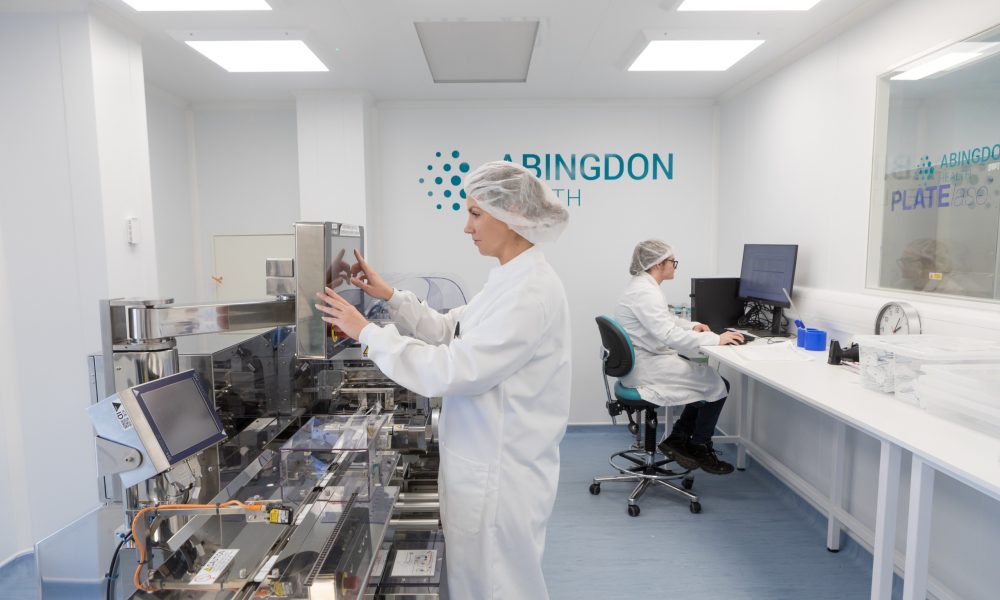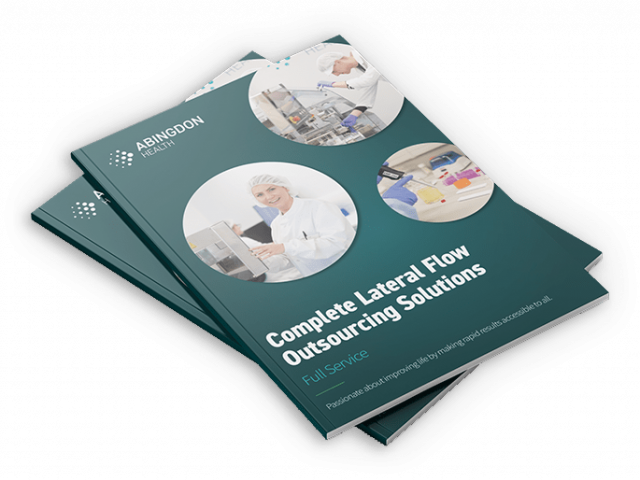Design & Develop for Success: Why R&D and Regulatory Affairs Need An Integrated Approach

Technical Development – A Brief Overview
Common Pitfalls – Things Not To Leave Too Late!
Supply Chain and Materials Selection – Best Practice
Also Plan Your Clinical Trial Early!
The Regulatory Environment – It’s Always Changing!
Key Takeaway: Focus On Your Critical Path
Abingdon’s R&D Director, Nina Garrett, and Head of Quality and Regulatory Affairs, Candice Vendettuoli, are today presenting at Merck’s Rapid Point of Care Test Development Workshop in Cork, Ireland.
This blogs outlines the key extracts from Nina and Candice’s presentation.
Abingdon Health’s R&D and regulatory teams have over 20 years’ experience in the lateral flow market and we are proud to support customers though the development, scale-up, technical transfer, manufacturing and regulatory approval process for bringing lateral flow products to market across a range of sectors including clinical (self-test, point of care), animal health, plant pathogen and environmental testing.
If you would like to understand more about the R&D and regulatory process of lateral flow development and discuss any specific requirements or concerns, don’t hesitate to contact Abingdon’s highly experienced team.
Technical Development – A Brief Overview
The technical development process follows well-defined milestone-driven procedures; from the preparation of design and development plans, through to feasibility, on to optimisation leading to design freeze, and then into scale-up and technical transfer which typically involves the production of three validation batches to ensure consistency across the product. The entire process is managed under a quality management system that enables the building of a technical file which supports products’ transfer to manufacture and any required regulatory approval processes.
Common Pitfalls – Things Not To Leave Too Late!
Common pitfalls that arise during technical development typically involve considering the various regulatory aspects too late in the process. A common misconception is that the regulatory process comes at the end of the technical development; however, it is important to consider elements such as packaging, labelling, supply chain, clinical trials and which territories to target early on in the process. Did you know, for example, one of the biggest reasons for recalls in medical devices and In Vitro Diagnostics (IVD) devices , such as lateral flow tests, is incorrect labelling. Abingdon’s technical development and regulatory teams work hand in hand from day one of any technical development process to ensure all these elements are captured early on.
Supply Chain and Materials Selection – Best Practice
One example of a common oversight is the failure to consider your supply chain and material selection early on in the process. From a materials selection point of view, we need to consider a wide range of areas when making our final choice(s); and whilst cost is clearly important, there are other questions you need to consider sooner rather than later. For example:
- Are they a critical supplier? If so, when will you audit them; do you need a supplier contract in place?
- Where is the supplier based? And does this impact logistics and lead times?
- What quality management system do they comply with?
- What specific material requirements does the supplier need to comply with, e.g. is a certificate of analysis required and, if so, does the contents meet your requirements?
Also Plan Your Clinical Trial Early!
Not only do the regulatory requirements impact design choices for materials, they also impact the way we conduct the clinical studies and navigate the design and development pathway. Again, it is important to plan for any clinical trial requirement early.
The end-user of our products affects what kind of studies are needed. Is it for laboratory use or is it a home-test? A member of the public cannot be expected to carry out a blood draw to gain human serum, for example, so our studies must be designed with the end-user in mind.
Also bear in mind performance requirements of certain tests are defined in regulations. For the EU, some of the highest-risk lateral flow tests require common technical specifications and these provide set criteria for things like sensitivity and specificity, and also the number of samples required for clinical studies. In the US, guidance documents are available for certain lateral flow tests which share the same type of information; however, there will be additional specific requirements for certain tests.
Also importantly, have we considered the long-term commercial strategy? And does the development plan, verification and validation studies and clinical trial(s) cover the material requirements of the territories where we’d like to sell the test in say 5 years time…?
The Regulatory Environment – It’s Always Changing!
It’s critical to keep an eye on the ever-evolving regulatory landscape! Although regulations follow a similar general theme across the globe, they may have different detailed requirements in different territories. Navigating multiple countries and regulatory approval pathways requires an expert understanding of all the different requirements at once; and also these regulations are constantly changing.
Keeping a watching brief on changes during the design process is essential.
As you may be aware, there are some big changes happening in the regulatory world; for example, the transition to IVDR from IVDD in the EU, and the introduction of the UKCA mark in the UK following Brexit. And within each set of regulations, there are also transitional arrangements to consider. In essence, a complex regulatory landscape requires a thorough understanding as early as possible and you need to stay informed as your design process develops.
Key Takeaway: Focus On Your Critical Path
Project initiation should include a review of all key areas that are on the critical path and your regulatory approach will be a major element of that process; whether it’s (for example) your market entry strategy and territory-specific regulatory requirements, the intended use / user, the clinical trial requirements, or the supply chain and materials.
Considering all these factors at an early-stage and planning these into your overall project will ensure your process runs efficiently and maximises your chances of success!
In summary, plan your technical development and regulatory plans together from the outset. Ultimately this will allow you to get your product to market faster; more cost-effectively; and, therefore, generating revenues more quickly.
Decades of CDMO experience in taking tests from concept to commercialisation has led to Abingdon Health establishing effective processes that ensures efficient and cost-effective development, scale-up, technical transfer, regulatory approval and high-throughput manufacturing. Contact the Abingdon Health team to see how we can help take your test from R&D into robust manufacture and commercial success. Also, discuss our value-added services, such as regulatory and commercial support, that provide a de-risked and streamlined route to market.

